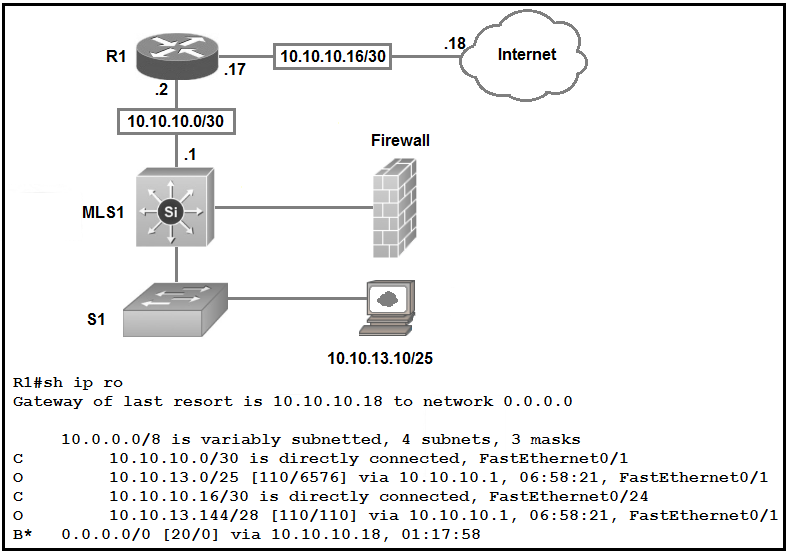
Refer to the exhibit. Which type of route does R1 use to reach host 10.10.13.10/32?
B
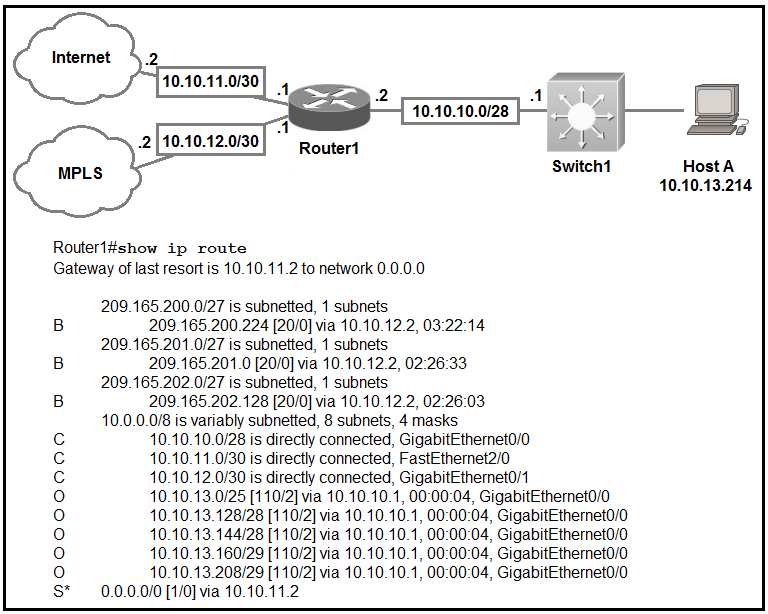
Refer to the exhibit. Which prefix does Router1 use for traffic to Host A?
D
The prefix with ג€longest prefixג€ will be matched first, in this case is ג€/29ג€.
DRAG DROP -
Drag and drop the descriptions of file-transfer protocols from the left onto the correct protocols on the right.
Select and Place: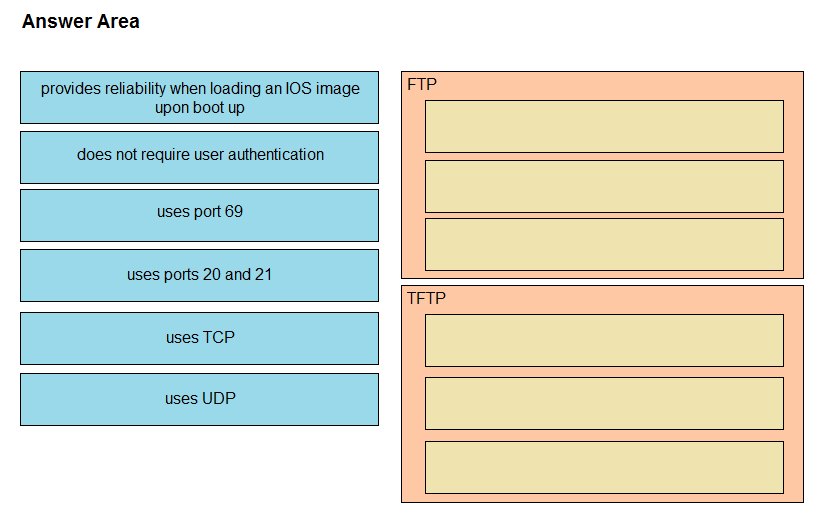
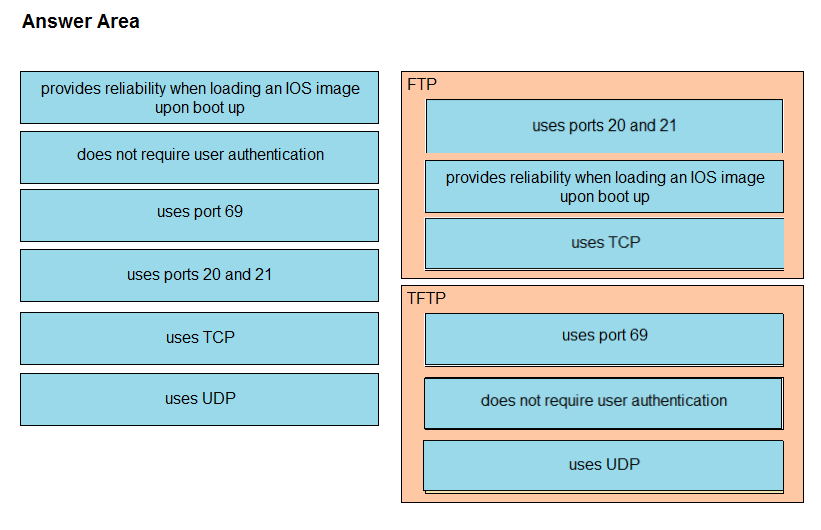
A frame that enters a switch fails the Frame Check Sequence. Which two interface counters are incremented? (Choose two.)
AD
Whenever the physical transmission has problems, the receiving device might receive a frame whose bits have changed values. These frames do not pass the error detection logic as implemented in the FCS field in the Ethernet trailer. The receiving device discards the frame and counts it as some kind of input error.
Cisco switches list this error as a CRC error. Cyclic redundancy check (CRC) is a term related to how the FCS math detects an error.
The ג€input errorsג€ includes runts, giants, no buffer, CRC, frame, overrun, and ignored counts.
The output below show the interface counters with the ג€show interface s0/0/0ג€ command: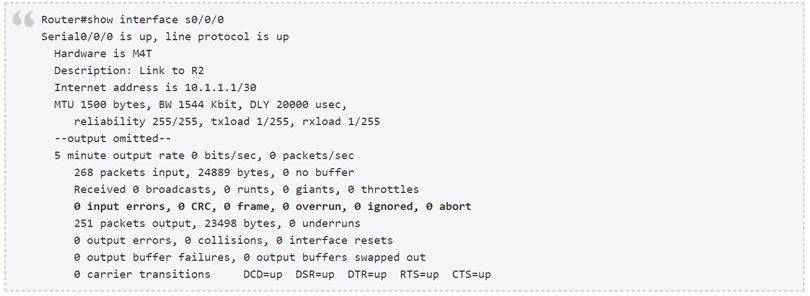
DRAG DROP -
Drag and drop the IPv4 network subnets from the left onto the correct usable host ranges on the right.
Select and Place: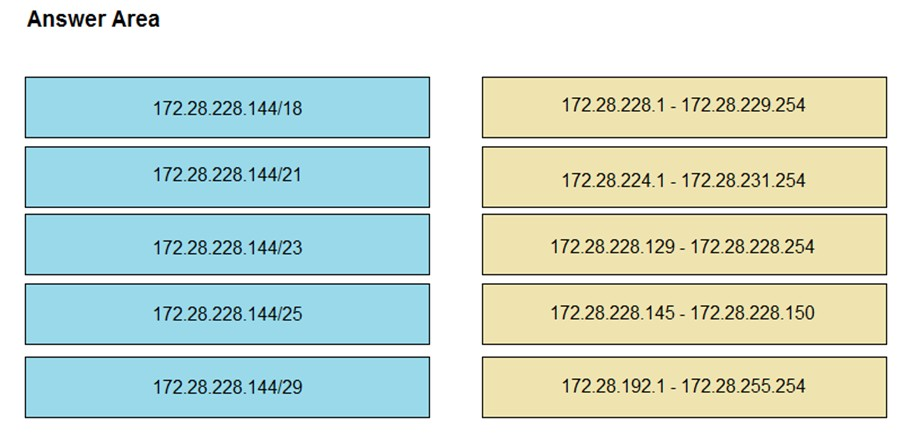
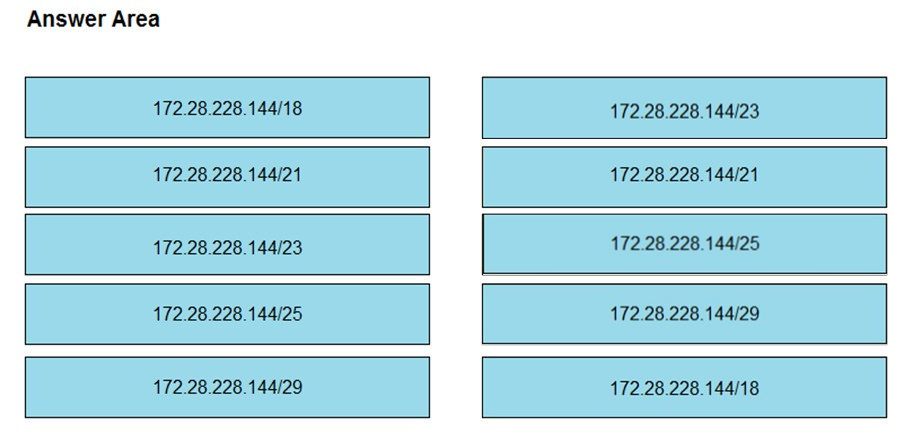
This subnet question requires us to grasp how to subnet very well. To quickly find out the subnet range, we have to find out the increment and the network address of each subnet. Let's take an example with the subnet 172.28.228.144/18:
From the /18 (= 1100 0000 in the 3rd octet), we find out the increment is 64. Therefore the network address of this subnet must be the greatest multiple of the increment but not greater than the value in the 3rd octet (228). We can find out the 3rd octet of the network address is 192 (because 192 = 64 * 3 and 192 < 228) -
> The network address is 172.28.192.0. So the first usable host should be 172.28.192.1 and it matches with the 5th answer on the right. In this case we don't need to calculate the broadcast address because we found the correct answer.
Let's take another example with subnet 172.28.228.144/23 -> The increment is 2 (as /23 = 1111 1110 in 3rd octet) -> The 3rd octet of the network address is 228
(because 228 is the multiply of 2 and equal to the 3rd octet) -> The network address is 172.28.228.0 -> The first usable host is 172.28.228.1. It is not necessary but if we want to find out the broadcast address of this subnet, we can find out the next network address, which is 172.28.(228 + the increment number).0 or
172.28.230.0 then reduce 1 bit -> 172.28.229.255 is the broadcast address of our subnet. Therefore the last usable host is 172.28.229.254.
How do TCP and UDP differ in the way that they establish a connection between two endpoints?
A
Which 802.11 frame type is Association Response?
A
There are three main types of 802.11 frames: the Data Frame, the Management Frame and the Control Frame. Association Response belongs to Management
Frame. Association response is sent in response to an association request.
Reference:
https://en.wikipedia.org/wiki/802.11_Frame_Types
In which way does a spine-and-leaf architecture allow for scalability in a network when additional access ports are required?
C
Spine-leaf architecture is typically deployed as two layers: spines (such as an aggregation layer), and leaves (such as an access layer). Spine-leaf topologies provide high-bandwidth, low-latency, nonblocking server-to-server connectivity.
Leaf (aggregation) switches are what provide devices access to the fabric (the network of spine and leaf switches) and are typically deployed at the top of the rack. Generally, devices connect to the leaf switches. Devices can include servers, Layer 4-7 services (firewalls and load balancers), and WAN or Internet routers.
Leaf switches do not connect to other leaf switches. In spine-and-leaf architecture, every leaf should connect to every spine in a full mesh.
Spine (aggregation) switches are used to connect to all leaf switches and are typically deployed at the end or middle of the row. Spine switches do not connect to other spine switches.
Reference:
https://www.cisco.com/c/en/us/products/collateral/switches/nexus-9000-series-switches/guide-c07-733228.html
What identifies the functionality of virtual machines?
C
Which command automatically generates an IPv6 address from a specified IPv6 prefix and MAC address of an interface?
C
The ג€ipv6 address autoconfigג€ command causes the device to perform IPv6 stateless address auto-configuration to discover prefixes on the link and then to add the EUI-64 based addresses to the interface. Addresses are configured depending on the prefixes received in Router Advertisement (RA) messages. The device will listen for RA messages which are transmitted periodically from the router (DHCP Server). This RA message allows a host to create a global IPv6 address from:
ג€¢ Its interface identifier (EUI-64 address)
ג€¢ Link Prefix (obtained via RA)
Note: Global address is the combination of Link Prefix and EUI-64 address